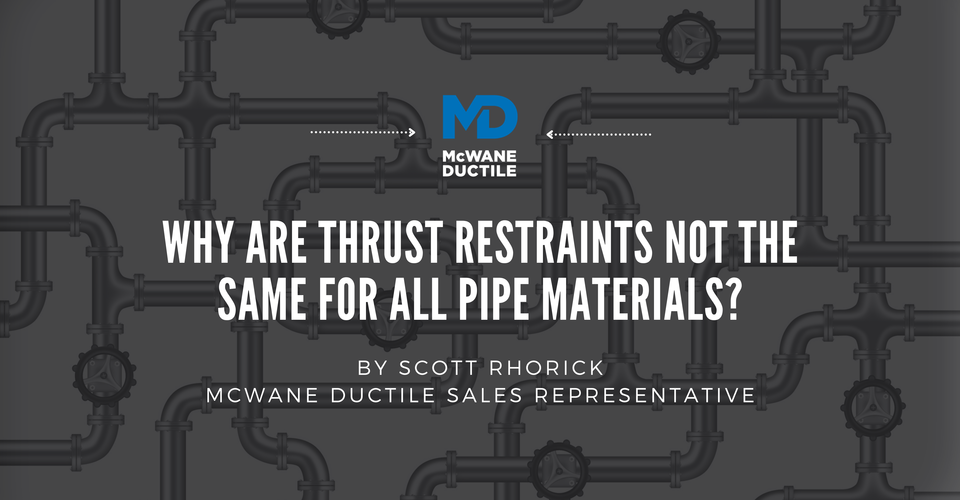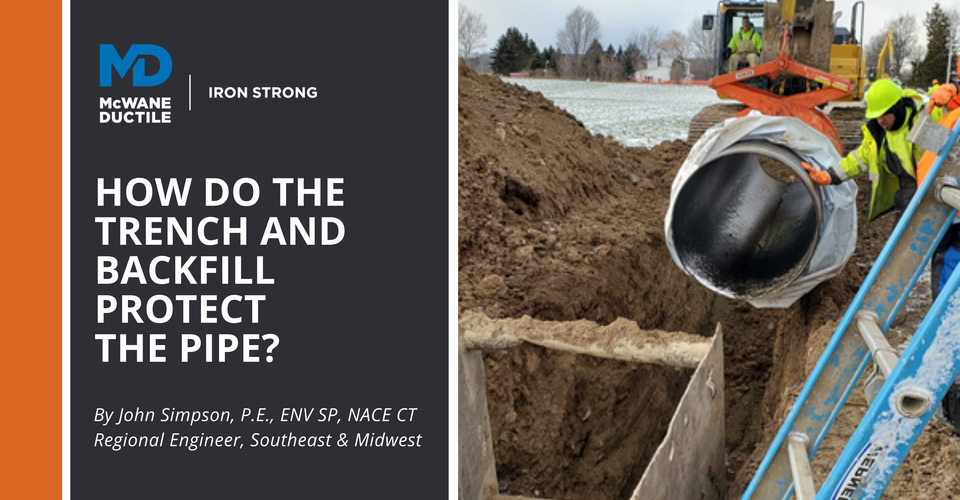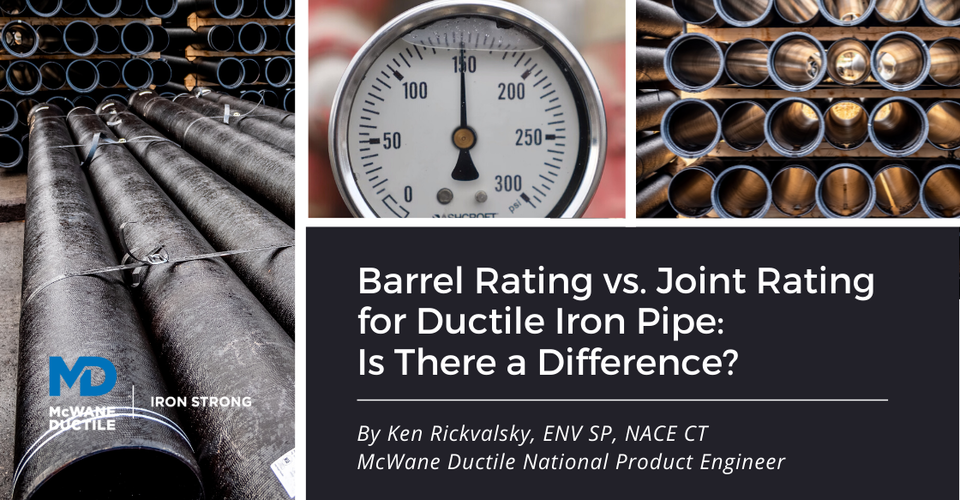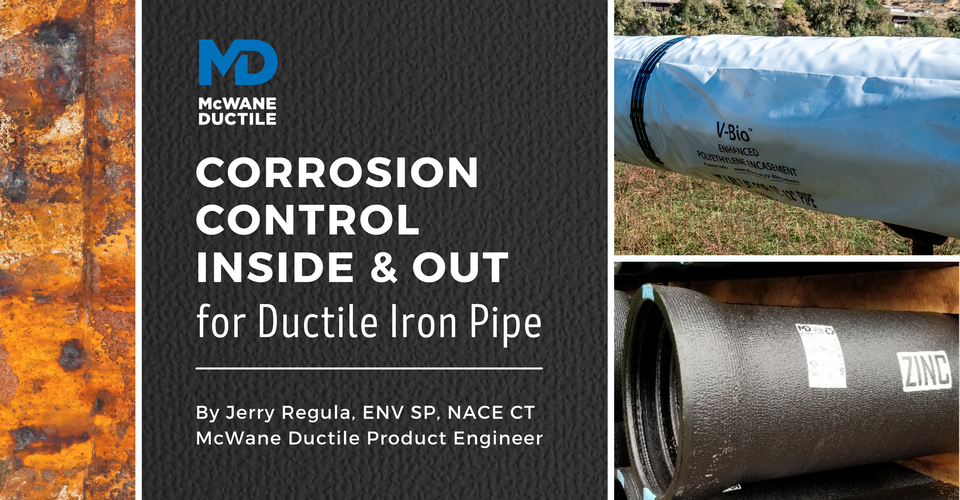-
Why Are Thrust Restraints Not the Same for All Pipe Materials?
12/13/2021 In Products TechnicalIn today’s marketplace, everything is in constant flux. Projects have specific completion times, and material lead times are continually increasing. For a variety of reasons, materials that typically were in stock for immediate shipment now take weeks to months before they are available to ship. You may be considering changing the piping material to be used in your water line project to another type of material. A significant consideration is how each type of piping material requires different lengths of restraint to control the change of direction in the line.
-
How Do the Trench and Backfill Protect the Pipe?
12/02/2021 In Installation TechnicalUtility pipelines provide for some of the most basic needs within our society. Essential services, such as supplying potable drinking water to our homes and businesses or sending wastewater away, are possible because of a network of buried pipelines. Whatever pipeline materials are used, they are expected to meet minimum service qualities such as withstanding leakage. This resiliency to leakage eliminates waste of our precious drinking water and prevents polluted soils from wastewater in the pipeline's proximity.
-
Why Is Using the Right Design Criteria Important in Calculating Restraint Requirements?
11/19/2021 In Installation TechnicalWhen I first started my engineering career, I was placed in charge of coordinating the relocation of water transmission and distribution pipelines to accommodate the construction of an interstate highway through a city of approximately 180,000 residents. Many times, these projects required pre-poured thrust block restraints due to the amended connections between new and old waterlines in a short timeframe so as not to leave customers inordinately out of water for long periods of time.
-
Hydrotesting on Slopes: The Hills Have PSI!
10/28/2021 In Installation TechnicalDear Ditch Doctor: Out here in the western United States, we wind up with a lot of pipelines installed up or down serious hills, dare I say mountains as well? We are good at the construction part, yet time after time we struggle with getting a satisfactory post-installation hydrostatic test on the pipeline, especially with inclined installations. Often the pipeline drops anywhere from 20 to 50 psi on the gauge and can do that several times or more until we take some sort of drastic redo/restart on the test procedures.
-
Barrel Rating vs. Joint Rating for Ductile Iron Pipe: Is There a Difference?
10/15/2021 In TechnicalWhenever the word "rating" is used regarding Ductile iron pipe (DI pipe), a 100-psi surge allowance and a safety factor of 2.0 are consistently included for all wall classes. This leads to conservative yet versatile designs for the long-term performance of utility pipelines of all kinds in various or changing conditions. Hence the basic universal rating for DI pipe is 350-psi which equates to a minimum of 900-psi of hydrostatic pressure containment within the pipeline.
-
Corrosion Control - Inside and Out - for Ductile Iron Pipe
10/08/2021 In Products TechnicalWhen it comes to water system project design, there are many factors to consider when utilizing Ductile iron pipe (DI pipe). One of the most important is corrosion prevention, and if correctly addressed, there are great opportunities to design your systems with projected life spans extending well beyond 100 years.
-
What are Some Top FAQs on Ductile Iron Pipe?
09/13/2021 In Installation Products TechnicalAs a manufacturer of Ductile iron pipe (DI pipe), we often field questions from water professionals regarding DI pipe, its uses, and how to install it properly. We even receive numerous questions about alternate materials, their differences, their uses, and the best choice for the application. And of course, when you ask, we answer…honestly, even when the answer doesn’t include Ductile iron. In this Iron Strong Blog, we’ll cover a few of our frequently asked questions (FAQ) and provide some solutions. We will continue with this FAQ series in the upcoming months.
-
How to Use the McWane Pocket Engineer Flow Calculator – Number 2 in a Series of 11
07/21/2021 In Products TechnicalHow much water can I get through that pipe? What size pipe should I use to carry that much water? Two similar-sounding questions that, in truth, are entirely different. Not to mention, both are missing the keyword to consider in resolving each question, that word being "efficiently." The McWane Pocket Engineer (PE) Flow Calculator quickly and easily answers all three concerns - flow rate, pipe size, and flow efficiency.
-
What Did I Dig Up - Gray Iron or Ductile Iron Pipe?
06/25/2021 In Products TechnicalSo, the site plans say, "… connect to existing iron pipe." Now that we’ve dug down to it, I can’t tell if it is gray iron or Ductile iron pipe. Are there ways to reliably distinguish between the two without some physical testing on a sample? In this blog, we'll take a closer look at the characteristics and differences between the two types of pipe.
-
What is Open Procurement from an Engineer’s and Utility Manager’s Perspective?
06/11/2021 In Products TechnicalThere is a national effort to deny engineers, utilities, municipalities, public entities, and other waterworks professionals the ability to design water, wastewater, and stormwater projects in the manner that best serves the needs of their community. This effort focuses on water system piping but could be expanded to other infrastructure materials, as well. This blog contains a Q&A session conducted with a civil engineer, John Simpson, and a former utility manager, Roy Mundy, regarding Open Procurement.
Latest Posts
- TR FLEX PIPE: The Truth About Availability and Pressure Ratings 11/14/2024 In Products Technical
- Who Are Circuit Riders and How Can They Assist Your Small Water Utility? 11/05/2024 In Products What is
- Gaskets, Goblins, and Ghouls, Oh My! A Cure from the Ditch Doctor 10/31/2024 In How Products Q&A Technical
- How Can Using Ductile Iron Pipe Save Money on a Water Utility’s Energy Bill? 10/22/2024 In Products Technical















